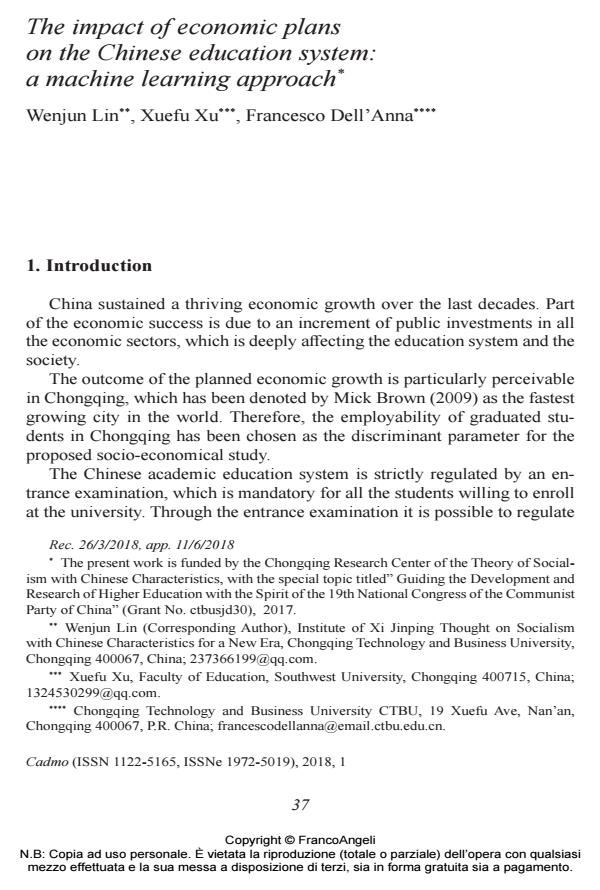The impact of economic plans on the Chinese education system: a machine learning approach
Titolo Rivista CADMO
Autori/Curatori Wenjun Lin, Xuefu Xu, Francesco Dell’Anna
Anno di pubblicazione 2018 Fascicolo 2018/1
Lingua Inglese Numero pagine 13 P. 37-49 Dimensione file 204 KB
DOI 10.3280/CAD2018-001005
Il DOI è il codice a barre della proprietà intellettuale: per saperne di più
clicca qui
Qui sotto puoi vedere in anteprima la prima pagina di questo articolo.
Se questo articolo ti interessa, lo puoi acquistare (e scaricare in formato pdf) seguendo le facili indicazioni per acquistare il download credit. Acquista Download Credits per scaricare questo Articolo in formato PDF

FrancoAngeli è membro della Publishers International Linking Association, Inc (PILA)associazione indipendente e non profit per facilitare (attraverso i servizi tecnologici implementati da CrossRef.org) l’accesso degli studiosi ai contenuti digitali nelle pubblicazioni professionali e scientifiche
This paper investigates the effects of Chinese economic plans on the academic education system. To quantitatively illustrate the outcomes of investment plans on the Chinese contemporarily society, the conducted study proposes a mathematical model for the employability of graduated students. The proposed technique consists in an averaging intermodel ensemble of several neural networks trained on a labeled dataset categorized as follows: age and gender, study program and academic achievements, willingness to work in the considered industry sectors and, public investments on the considered industry fields. The supervisory signal chosen for the analysis is the ratio between graduated and employed students. The attained models clearly jibe on the importance of investments in each working sector as the most impactful parameter affecting the student employability.
Parole chiave:Planned economic growth; Chinese education system; employ¬ability analysis; supervised machine learning; inter-model ensemble.
Wenjun Lin, Xuefu Xu, Francesco Dell’Anna, The impact of economic plans on the Chinese education system: a machine learning approach in "CADMO" 1/2018, pp 37-49, DOI: 10.3280/CAD2018-001005